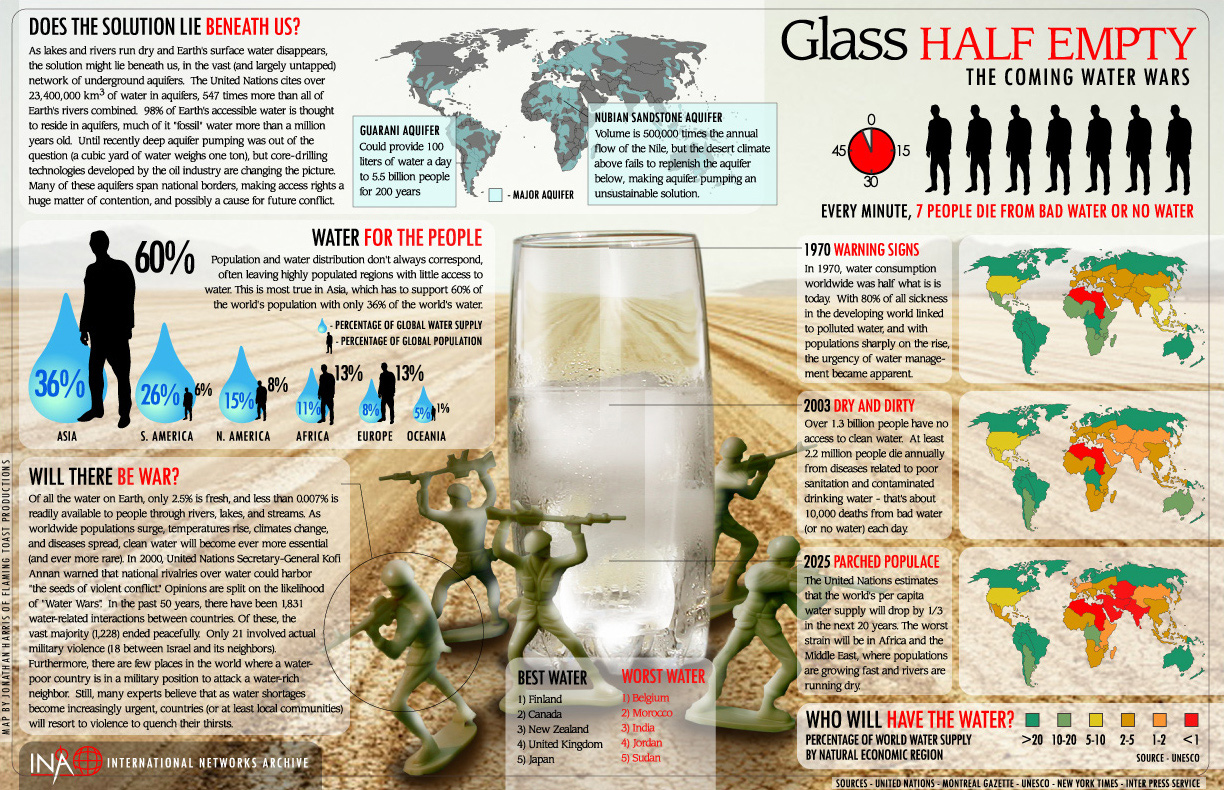Uzbeki women picking cotton. Uzbekistan is the world’s third largest exporter of cotton
Advertisement
A map of global water tensions (Al Jazeera)
The situation is fluid
Advertisement

Infographic courtesy International Networks Archive, Princeton University; by Jonathan Harris, Number 27
Advertisement
